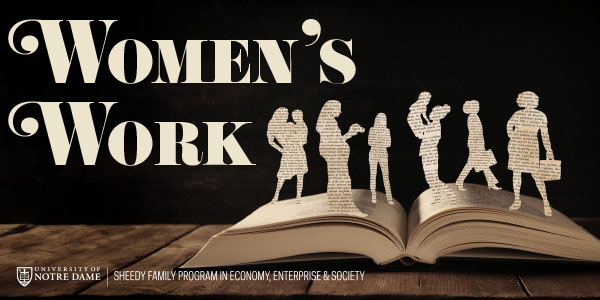What do we mean when we call something “women’s work”—and who decided it?
In this conversation, labor historian Dr. Dan Graff joins Dr. Chris Hedlin to trace how Americans have gendered, valued, and contested women’s labor from the colonial era to the present. Drawing from Graff’s course Gender at Work in U.S. History and Hedlin’s own teaching of Women’s Work, the discussion weaves together history, literature, and lived experience to explore how work gets defined—not just by tasks, but by power, ideology, and recognition.
Why Study Women’s Work?
Hedlin opens with a question: Why are care work, teaching, and domestic chores so often seen as “properly” women’s work? Graff responds with the historian’s lens, describing labor history not just as economic study but as a way of understanding everyday lives. He notes that the field emerged in the 1960s and ’70s alongside broader movements to recover the histories of women, workers, and racial minorities.
Gender, Labor, and the Archive
Graff reflects on developing his course, prompted by both scholarly gaps and personal experience raising daughters. The course takes a dual approach: it examines how gender shapes labor, and how ideas of “women’s work” shift across time, space, and race. Hedlin notes the challenge of tracing these shifts—many working women left few written records. Much of what we know comes filtered through elite, male, or outsider perspectives.
Whose Work Counts?
Graff discusses how even the concept of “work” is culturally constructed. In colonial encounters, English and Indigenous communities clashed over who should farm, cook, or manage households—each group finding the other’s gender norms strange or threatening. These conflicts reveal that labor was always political, always shaped by culture and power.
Stories of Labor and Agency
The conversation highlights overlooked stories of resistance—like that of Lana Sawyer, a seamstress who brought a rape charge against a member of New York’s elite in the 1790s. While the verdict reinforced existing power structures, the public reaction showed how working-class women were beginning to assert moral and civic authority. Graff and Hedlin also discuss Seth Rockman’s Scraping By, which documents how early wage labor—especially for women and people of color—was structured by inequality, not opportunity.
The “Separate Spheres” Myth
The conversation turns to the 19th-century ideal of “separate spheres”: men in public, women in private. Graff explains how this ideology made domestic labor invisible—coded as love or virtue, not work. Hedlin brings in literary insight, noting how novels and treatises by Catherine and Harriet Beecher reinforced these roles, blending moral authority with social constraint.
Was this ideology empowering? Sometimes. But both speakers agree: it also limited women’s choices and justified exclusion. The story of women’s labor is not one of linear progress—but of negotiation, strategy, and contestation.
Reform, Resistance, and What Comes Next
Graff outlines how industrialization brought more women into paid labor, though often in feminized, low-wage roles. The New Deal marked a turning point: legislation like Social Security and the Fair Labor Standards Act redefined the state’s role—but often through a gendered lens.
Today, he argues, the next frontier is the care economy—childcare, eldercare, domestic support—still overwhelmingly shouldered by women. Real equity will require cultural and structural change: public investment, family support, and greater male participation at home.
Final Reflection
This conversation reveals that what we call “women’s work” is never just about tasks—it’s about meaning, recognition, and power. Studying these histories helps us understand not just the past, but the choices we face now.
As Graff and Hedlin show, the way we define labor—and the stories we tell about who does it—remains one of the central ethical and political questions of our time.






